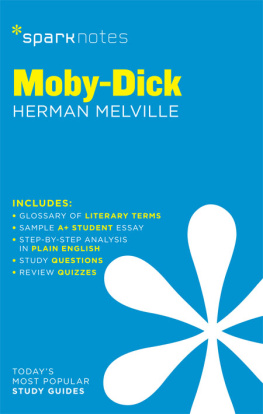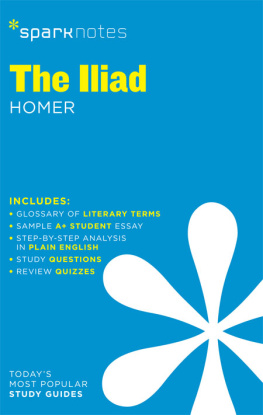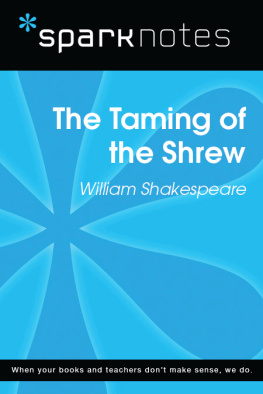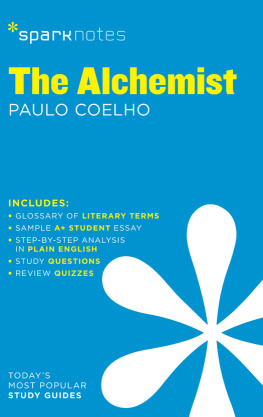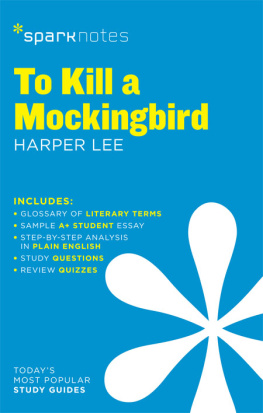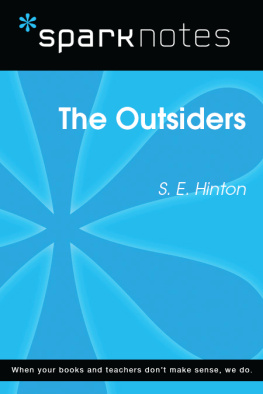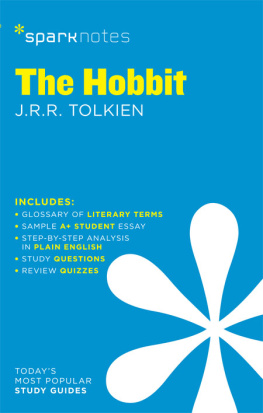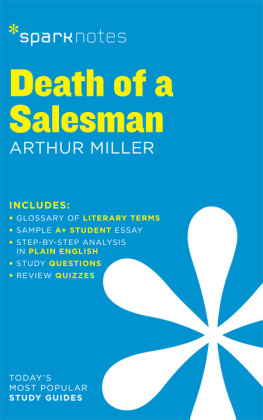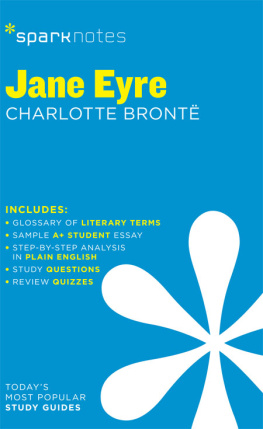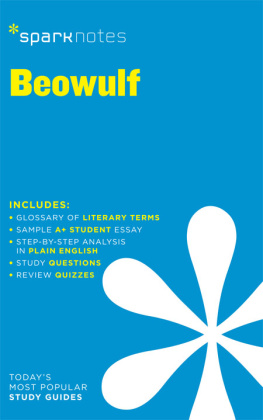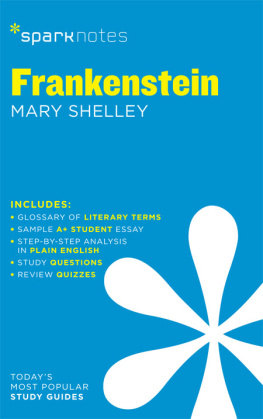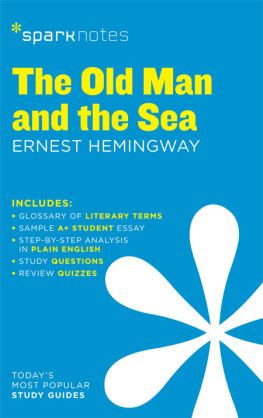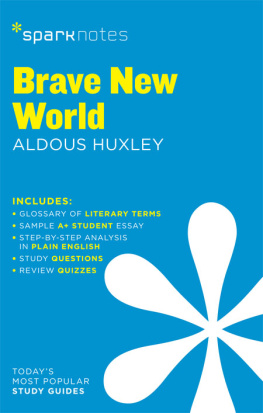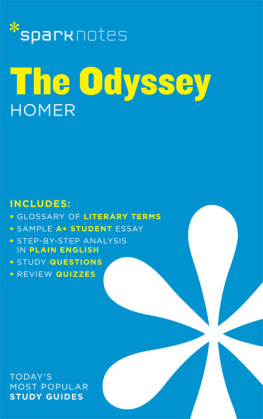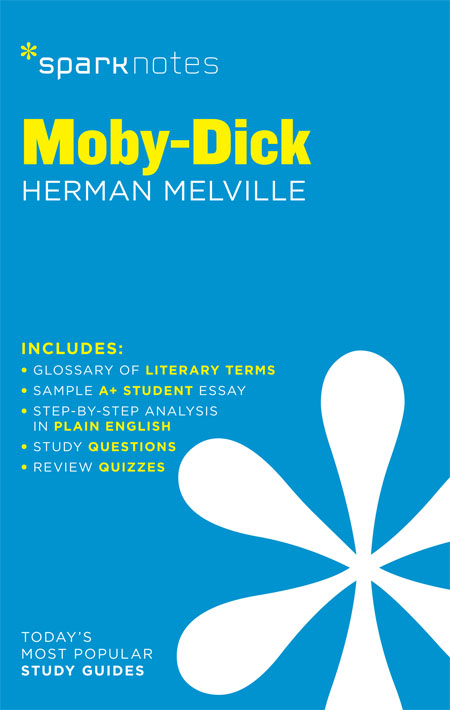Moby-Dick
Herman Melville
2003, 2007 by Spark Publishing
This Spark Publishing edition 2014 by SparkNotes LLC, an Affiliate of Barnes & Noble
All rights reserved. No part of this publication may be reproduced, stored in a retrieval system, or transmitted in any form or by any means (including electronic, mechanical, photocopying, recording, or otherwise) without prior written permission from the publisher.
Sparknotes is a registered trademark of SparkNotes LLC
Spark Publishing
A Division of Barnes & Noble
120 Fifth Avenue
New York, NY 10011
www.sparknotes.com /
ISBN-13: 978-1-4114-7176-4
Please submit changes or report errors to www.sparknotes.com/errors.
10 9 8 7 6 5 4 3 2 1
Context
H erman Melville was born in New York City in 1819 , the third of eight children born to Maria Gansevoort Melville and Allan Melville, a prosperous importer of foreign goods. When the family business failed at the end of the 1820 s, the Melvilles relocated to Albany in an attempt to revive their fortunes. A string of further bad luck and overwork, however, drove his father to an early grave, and the young Melville was forced to start working in a bank at the age of thirteen.
After a few more years of formal education, Melville left school at eighteen to become an elementary school teacher. This career was abruptly cut short and followed by a brief tenure as a newspaper reporter. Running out of alternatives on land, Melville made his first sea voyage at nineteen, as a merchant sailor on a ship bound for Liverpool, England. He returned to America the next summer to seek his fortune in the West. After settling briefly in Illinois, he went back east in the face of continuing financial difficulties.
Finally, driven to desperation at twenty-one, Melville committed to a whaling voyage of indefinite destination and scale on board a ship called the Acushnet. This journey took him around the continent of South America, across the Pacific Ocean, and to the South Seas, where he abandoned ship with a fellow sailor in the summer of 1842 , eighteen months after setting out from New York. The two men found themselves in the Marquesas Islands, where they accidentally wandered into the company of a tribe of cannibals. Lamed with a bad leg, Melville became separated from his companion and spent a month alone in the company of the natives. This experience later formed the core of his first novel, Typee: A Peep at Polynesian Life, published in 1846 . An indeterminate mixture of fact and fiction, Melvilles fanciful travel narrative remained the most popular and successful of his works during his lifetime.
Life among these natives and other exotic experiences abroad provided Melville with endless literary conceits. Armed with the voluminous knowledge obtained from constant reading while at sea, Melville wrote a series of novels detailing his adventures and his philosophy of life. Typee was followed by Omoo ( 1847 ) and Mardi and a Voyage Thither ( 1849 ), two more novels about his Polynesian experiences. Redburn, also published in 1849 , is a fictionalized account of Melvilles first voyage to Liverpool. His next novel, White-Jacket; or The World in a Man-of-War, published in 1850 , is a generalized and allegorical account of life at sea aboard a warship.
Through the lens of literary history, these first five novels are all seen as an apprenticeship to what is today considered Melvilles masterpiece, Moby-Dick; or The Whale, which first appeared in 1851 . A story of monomania aboard a whaling ship, Moby-Dick is a tremendously ambitious novel that functions at once as a documentary of life at sea and a vast philosophical allegory of life in general. No sacred subject is spared in this bleak and scathing critique of the known world, as Melville satirizes by turns religious traditions, moral values, and the literary and political figures of the day.
Melville was influenced in the writing of Moby-Dick by the work of Nathaniel Hawthorne, author of The Scarlet Letter, whom he met in 1850 and to whom he dedicated Moby-Dick. Melville had long admired Hawthornes psychological depth and gothic grimness and associated Hawthorne with a new, distinctively American literature. Though the works of Shakespeare and Milton and stories in the Bible (especially the Old Testament) influenced Moby-Dick, Melville didnt look exclusively to celebrated cultural models. He drew on sources from popular culture as well; whaling narratives, for example, were popular in the nineteenth century. Melville relied on Thomas Beales encyclopedic Natural History of the Sperm Whale and the narrative Etchings of a Whaling Cruise, by J. Ross Browne.
By the 1850 s, whaling was a dying industry. Whales had been hunted into near extinction, and substitutes for whale oil had been found. Despite its range of cultural references and affiliation with popular genres, Moby-Dick was a failure. Its reception led Melville to defy his critics by writing in an increasingly experimental style and eventually forsaking novels in favor of poetry. He died in 1891 .
Moby-Dick remained largely ignored until the 1920 s, when it was rediscovered and promoted by literary historians interested in constructing an American literary tradition. To these critics, Moby-Dick was both a seminal work elaborating on classic American themes, such as religion, fate, and economic expansion, and a radically experimental anachronism that anticipated Modernism in its outsized scope and pastiche of forms. It stands alongside James Joyces Ulysses and Laurence Sternes Tristram Shandy as a novel that appears bizarre to the point of being unreadable but proves to be infinitely open to interpretation and discovery.
Plot Overview
I shmael, the narrator, announces his intent to ship aboard a whaling vessel. He has made several voyages as a sailor but none as a whaler. He travels to New Bedford, Massachusetts, where he stays in a whalers inn. Since the inn is rather full, he has to share a bed with a harpooner from the South Pacific named Queequeg. At first repulsed by Queequegs strange habits and shocking appearance (Queequeg is covered with tattoos), Ishmael eventually comes to appreciate the mans generosity and kind spirit, and the two decide to seek work on a whaling vessel together. They take a ferry to Nantucket, the traditional capital of the whaling industry. There they secure berths on the Pequod, a savage-looking ship adorned with the bones and teeth of sperm whales. Peleg and Bildad, the Pequods Quaker owners, drive a hard bargain in terms of salary. They also mention the ships mysterious captain, Ahab, who is still recovering from losing his leg in an encounter with a sperm whale on his last voyage.
The Pequod leaves Nantucket on a cold Christmas Day with a crew made up of men from many different countries and races. Soon the ship is in warmer waters, and Ahab makes his first appearance on deck, balancing gingerly on his false leg, which is made from a sperm whales jaw. He announces his desire to pursue and kill Moby Dick, the legendary great white whale who took his leg, because he sees this whale as the embodiment of evil. Ahab nails a gold doubloon to the mast and declares that it will be the prize for the first man to sight the whale. As the Pequod sails toward the southern tip of Africa, whales are sighted and unsuccessfully hunted. During the hunt, a group of men, none of whom anyone on the ships crew has seen before on the voyage, emerges from the hold. The mens leader is an exotic-looking man named Fedallah. These men constitute Ahabs private harpoon crew, smuggled aboard in defiance of Bildad and Peleg. Ahab hopes that their skills and Fedallahs prophetic abilities will help him in his hunt for Moby Dick.

